#locust beans
Explore tagged Tumblr posts
Text
Flavor Principles Out of Africa: It's the Beans
Fermented Foods, Especially Oilseeds, as Flavoring in the Cuisines of Africa Opo Iru ko ba obbe je. (Yoruba proverb): Plenty of Iru [dawadawa] does not spoil the stew. In Africa, as in other parts of the world, fermented foods form an important part of the diet. Made from plant and animal materials, these foods are transformed into more intensely flavored products by the presence of bacteria,…
1 note
·
View note
Text
Locust Beans for Fertility: A Natural Boon for Couples trying to conceive
A 2022 study shows that Locust Beans may be able to reduce sperm abnormalities and improve sperm quality, thanks to zinc and antioxidant content [1] What are locust beans African locust beans, also known as Iru, Ogiri, or Dawa Dawa, are the fermented seeds of the Parkia biglobosa tree. They are a common ingredient in West African cuisine and are used to add flavor and umami to soups, stews, and…

View On WordPress
0 notes
Text

𝙸𝚝'𝚜 𝚜𝚠𝚎𝚎𝚝 𝚕𝚒𝚔𝚎 𝚜𝚊𝚌𝚌𝚑𝚊𝚛𝚒𝚗𝚎
𝚆𝚑𝚊𝚝 𝙸’𝚍 𝚍𝚘 𝚝𝚘 𝚑𝚊𝚟𝚎 𝚢𝚘𝚞 𝚜𝚒𝚝𝚝𝚒𝚗𝚐 𝚑𝚎𝚛𝚎 𝚗𝚎𝚡𝚝 𝚝𝚘 𝚖𝚎
𝙻𝚘𝚘𝚔𝚒𝚗𝚐 𝚊𝚝 𝚢𝚘𝚞 𝚖𝚊𝚔𝚎𝚜 𝚖𝚎 𝚠𝚊𝚗𝚗𝚊 𝚐𝚘𝚞𝚐𝚎 𝚘𝚞𝚝 𝚖𝚢 𝚎𝚢𝚎𝚜
𝙱𝚕𝚘𝚘𝚍𝚢 𝚜𝚞𝚛𝚙𝚛𝚒𝚜𝚎
𝙻𝚒𝚔𝚎 𝚌𝚑𝚎𝚛𝚛𝚢 𝚙𝚒𝚎, 𝚠𝚒𝚕𝚕 𝚢𝚘𝚞 𝚋𝚎 𝚖𝚒𝚗𝚎?
i have been having Thoughts 🔪🩸
#tw blood#tw knives#tw gore#my art#canis canem edit#gary smith#bully#bully scholarship edition#bully game#bully rockstar#bully cce#bully fanart#yandere Gary has taken over my brain like a locust swarm#song is saccharine by jazmine bean#also gave him a buck 120 like GHOSTFACE!!!!!!!!!! 👻
218 notes
·
View notes
Text
hey. don’t cry, locust bean gum ok?
3 notes
·
View notes
Text


Beyond Possible Burger (Homemade Vegan Burger)
Recipe is in German btw
#vegan#lunch#burger patties#copycat#burgers#beets#pea protein#miso#tvp#nutritional yeast#xanthan gum#locust bean gum#liquid smoke#garlic powder#onion powder#soy sauce#coconut oil
5 notes
·
View notes
Text
This is the first time I've ever seen British and American English listed as separate languages

It's also the first time I've seen Danish and Swedish properly separated. As we should be

#yes i buy unhealthy candy for my guinea pigs what are you gonna do about it#i know locust bean is too fatty for them. and oil too. but it's enriching and they only get a little at a time🥺
6 notes
·
View notes
Text
ah shit here come the locusts
#shit#locusts#tumblr made me add tags#shitpost#just a bean doin weird shit#i guess#or saying cynical stoff
0 notes
Text
Essential Correspondences

🎨Creativity
Day: Wednesday, Sunday
Moon phase: Full Moon
Colors: Orange, yellow, red, purple
Herbs: Calamus, wood betony, lemon balm, rosemary, mugwort, cannabis (hemp), damiana, coltsfoot, peppermint, sage, passion flower, ashwagandha, basil, turmeric, mayflower, catnip, St. John's wort, licorice root, valerian, parsley, oregano, coffee, cinnamon, nutmeg, ginger, mint, eucalyptus
Incense: Sage, citronella, frankincense, peppermint
Essential oils: Orange, rosemary, peppermint
Crystals: Citrine, herkimer diamond, fire quartz, labradorite, orange adventurine, super seven, opal, pyrite, tangerine quartz, amethyst, lapis lazuli, peach moonstone, bumblebee jasper, rutile quartz, orange calcite, malachite, mookaite, auralite, topaz, pietersite, tiger's eye, blue lace agate, purple calcite
Metals: Gold, copper
Runes: Uruz, Kenaz
Tarot cards: The Magician, Temperance, The Empress, Ace of Wands, Queen of Wands, Page of Wands, 4 of Wands, Page of Cups, 6 of Cups, 7 of Cups, 8 of Pentacles

🔮Divination
Day: Monday
Moon Phase: Full Moon
Colors: Purple, lavender, yellow, silver, gold
Herbs: Blue lotus, camphor, eyebright, rowan, dandelion, bindweed, lavender, rose, coffee, red clover, nightshade, trillium, yarrow, holy basil, mugwort, damiana, bergamot, honeysuckle, pansy, bay leaf, calendula, vervain, frankincense, myrrh, star anise, benzoin, willow, orris root, rue, broom, dittany of Crete, flaxseed, buckeye, ivy, jasmine, goldenrod, penny royal wormwood, meadowsweet, acacia, agrimony, mullien, five-finger grass,
Incense: Myrrh, lavender, spirit
Essential oils: Lavender, rose, camphor, clove
Crystals: Lapis lazuli, indigo gabbro, moldavite, danburite, iolite, amethyst, azurite, sodalite, labradorite, blue apatite, charoite, tanzanite, clear quartz, obsidian, blue goldstone, larvakite, yooperlite, serpentine, blue kyanite, celestite, ametrine, moonstone, blue calcite, dumortierite, sapphire, nuummite, aqua aura quartz, chrysocolla, eudialite, sugilite
Metals: Silver, pewter, meteorite
Runes: Laguz, Eiwaz, Perth, Dagaz
Tarot cards: The Wheel of Fortune, The High Priestess, The Star, The Hermit, Ace of Cups
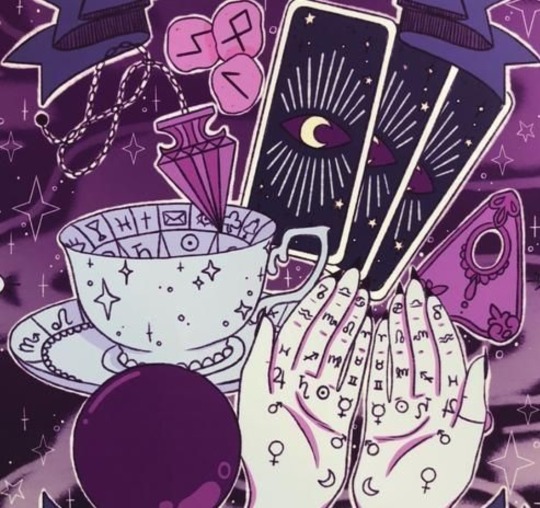
💵Wealth
Day: Thursday
Moon phase: Waxing Moon
Colors: Green, gold
Herbs: Patchouli, nettle, alfalfa, bay leaf, ginger, cinnamon, jasmine, five-finger grass, bergamot, allspice, thyme, basil, mint, fennel, fenugreek, chamomile, Irish moss, squill root, vanilla, tonka bean, lucky hand root, nutmeg, devil's shoestring, high john, rosemary, clove, dill, marigold, marjoram, black cohosh, bat's head root, pine, orange peel, almond, sugar, amber
Incense: Patchouli, amber, cinnamon, jasmine
Essential oils: Basil, orange, bergamot, patchouli
Crystals: Jade, citrine, pyrite, tiger's eye, green adventurine, peridot, rose quartz, emerald, moldavite, sunstone, serpentine, amber, tourmaline, moss agate, kumbaba jasper, rutile quartz, copper jadeite, green calcite, green quartz, bloodstone, chrysoprase, morganite, fire opal, lodestone, red coral, garden quartz, yellow sapphire, topaz
Metals: Gold, copper
Runes: Fehu
Tarot cards: Wheel of Fortune, The Magician, The Empress, Ace of Pentacles, 4 of Pentacles, 6 of Pentacles, 9 of Pentacles, 10 of Pentacles, Queen of Pentacles, King of Pentacles, 9 of Cups

🧿Protection
Day: Tuesday, Wednesday, Thursday, Friday, Saturday
Moon phase: Waning Moon, Black Moon
Colors: Black, red, white, blue, purple
Herbs: Jupiter, clove, althea, sage, rosemary, angelica, cayenne, cedar, rue, comfrey, hawthorne, artemesia, rowan, vervain, yarrow, wolfsbane, black locust, St. John's wort, garlic, elder, aloe, lavender, nettle, thyme, Solomon's seal, holly, onion, chive, holy basil, plantain, neem, eucalyptus, chamomile, mint, cinnamon, datura, mistletoe, oak, black pepper, agrimony, ash, lily, cactus, willow, red clover, boneset, blue berry, anise, bay leaf
Incense: Dragon's blood, sage, palo santo, sandalwood
Essential oils: Clove, cedarwood, rosemary
Crystals: Black tourmaline, clear quartz, amethyst, smokey quartz, hematite, obsidian, shungite, selenite, labradorite, pyrite, tiger's eye, bronzite, black agate, opal, onyx, fluorite, garnet, red jasper, black kyanite, malachite, jet, corundum, amber, fire agate, lapis lazuli, spirit quartz, lodestone, turquoise, black jade, smithsonite
Metals: Bronze, iron, silver, lead, steel, titanium
Runes: Algiz, Thurisaz, Sowilo, Ansuz
Tarot cards: The Star, the High Priestess, the Emporer, Strength, 9 of Pentacles, 10 of Pentacles, 6 of Swords
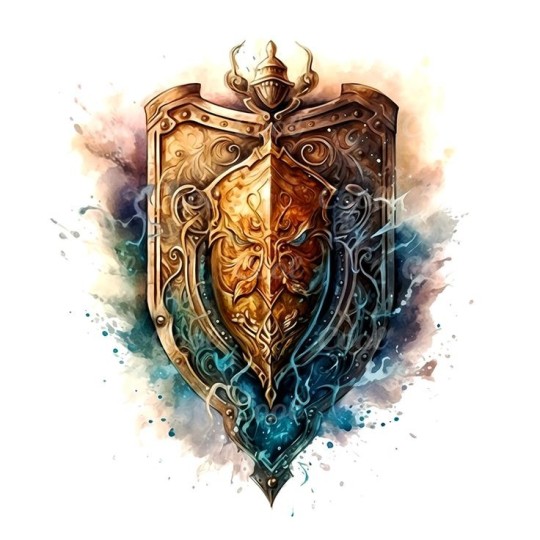
❤️🔥Love
Day: Friday
Moon phase: Waxing Moon
Colors: Red, pink, white
Herbs: Rose, jasmine, hibiscus, catnip, damiana, vanilla, thyme, ginger, black cohosh, lily, orchid, saffron, chickweed, magnolia, lovage, marjoram, walnut, rosemary, verbena, lemon balm, rhubarb, clover, lavender, basil, sesame, meadowsweet, licorice root, lady's mantle, strawberry, sunflower, coriander, apple, cinnamon, juniper, dill, daisy, cumin, fennel, carnation, patchouli, sorrel, elder, marshmallow, cilantro, ylang-ylang, sugar, tulip, oak, cocoa, carraway, orris root, spiderwort, bleeding heart, tamarind, beet, ash, elm
Incense: Rose, patchouli, jasmine, ylang-ylang
Essential oils: Rose, orange, dragon's blood
Crystals: Rose quartz, kunzite, rhodonite, garnet, pink tourmaline, ruby, jade, rhodochrosite, malachite, danburite, morganite, pink opal, carnelian, chrysocolla, ruby-zoisite, strawberry quartz, peach moonstone, red agate, pink calcite, diamond, watermelon tourmaline, howlite, emerald, phosphosiderite, sunstone, amber, turquoise, prehnite, amazonite, rainbow obsidian, ocean jasper, mangano calcite, argonite, topaz
Metals: Copper, rose gold
Runes: Gebo, Ingwaz
Tarot cards: The Lovers, the Hierophant, the Emporer, the Empress, Ace of Cups, 2 of Cups, 10 of Cups, Knight of Cups, 4 of Wands, 10 of Pentacles

☮️Peace
Day: Monday, Sunday
Moon phase: Waxing moon
Colors: Light blue, lavender, pink, white
Herbs: Lavender, chamomile, violet, gardenia, olive, myrtle, skull cap, blue bell, lily of the valley, lilac, lemongrass, sage, ashwagandha, holy basil, lemon balm, passion flower, valerian, rose, cannabis (hemp), penny royal, dulce, loosestrife, motherwort, morning glory, clary sage, marjoram, hops, rhodiola, blue lotus, dandelion, poppy, vervain, mugwort, nettle, rosemary, hawthorne, ginseng, kava, cumin, white rose, carnation, cherry, spearmint, angelica root, peace lily, daffodil, trillium
Incense: Sandalwood, palo santo, lavender
Essential oils: Lavender, almond, olive
Crystals: Larimar, blue lace agate, Apache tear, kunzite, desert rose, lithium quartz, celestite, selenite, lepidolite, sodalite, stilbite, cerusite, angelite, aquamarine, amazonite, fluorite, turquoise, blue-green tourmaline, amethyst, ammonite, shungite, cacoxenite, blue tiger's eye, blue calcite, azestuite, jade, kyanite, moonstone, tree agate, phantom quartz, flower agate, rose quartz, unakite
Metals: Silver
Runes: Teiwaz, Algiz, Wunjo, Inguz
Tarot cards: Temperance, the Sun, 4 of Swords

🔒Banishing
Day: Sunday, Tuesday
Moon phase: Black Moon, New Moon, Waning Moon
Colors: Black, grey
Herbs: Black willow, agrimony, juniper, wormwood, citronella, devil's bit, fumitory, bay leaf, black locust, cayenne, garlic, fleabane, hellebore, vervain, blessed thistle, mandrake, wolfsbane, broom, lilac, pine, rue, blood root, black pepper, coffee, anise, turnip, clover, paprika, sage, feverfew, oregano, fir, cassia, hyssop, peppermint, lemon, cowslip, stinging nettle, coriander, chrysanthemum, vertiver
Incense: Copal, dragon's blood, frankincense, myyrh, citronella, sage
Essential oils: Peppermint, lemon, cedarwood, clove
Crystals: Black jasper, rutile quartz, obsidian, jet, nuummite, black kyanite, labradorite, lepidolite, selenite, black quartz, black moonstone, clear quartz, optical calcite, fire quartz, fluorite, angel aura quartz, auralite, aegerine, brimstone (sulpher), septarian, black opal, red tiger's eye, marcosite
Metals: Iron
Runes: Algiz, Isa
Tarot cards: Death, the Hermit, the Emporer, 8 of Cups, 6 of Swords
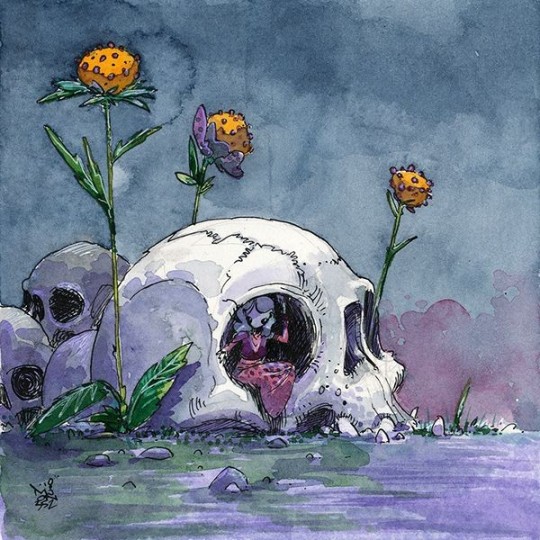
👍Success
Day: Thursday, Sunday
Moon phase: Waxing Moon, Full Moon, Blue Moon
Colors: Yellow, gold
Herbs: Saffron, cinnamon, mayflower, bergamot, honeysuckle, high john, ginger, Irish moss, poppy seeds, basil, patchouli, clover, lucky hand root, sassafras, wood aloe, winter's bark, apple, bamboo, cabbage, violet, mint, heather, comfrey, allspice, dittany of Crete, calamus root, mustard seed, fern, goldenseal, hawthorne, pecan,
Incense: Frankincense, cinnamon, amber
Essential oils: Bergamot, ginger, clove, orange
Crystals: Alexandrite, apatite, Libyan desert glass, pietersite, labradorite, garnet, petrified wood, corundom, citrine, rutile quartz, green kyanite, green tourmaline, lemon aura quartz, leaopard skin jasper, peacock ore, black jade, peridot, aquamarine, K-2 jasper, chrysolite, chiastolite, tiger's eye, yooperlite, herkimer diamond, emerald, green adventurine, rhodonite, hematite, green calcite, yellow jade
Metals: Gold, platinum, iron, titanium
Runes: Jera, Sowilo, Teiwaz
Tarot cards: the World, the Emporer, the Chariot, 4 of Wands, 6 of Wands, 9 of Pentacles, 10 of Pentacles, 10 of Cups, the kings

#magick#witch#witchcraft#correspondences#witchblr#witch community#pagan community#eclectic#eclectic pagan#eclectic witch#creativity#divination#wealth#protection magic#protection#Love#peace#Banishment#banishing#Succuss
122 notes
·
View notes
Text
common toxic plants
[long post; updated 12.8.24]
this is not a complete list by any means, but these commonly noted plants, herbs, and flowers should be handled with care or avoided altogether.
aconite (wolfsbane, monkshood) - all parts: dermatoxic, hepatotoxic, and neurotoxic
adam and eve (jack-in-the-pulpit, wild arum) - root: dermatoxic and gastrotoxic if ingested
african sumac - leaves: dermatoxic; possibly fatal
agave - juice: dermatoxic
angel’s trumpet - all parts: cardiotoxic; often fatal
apple - seeds: cytotoxic in large doses
apricot - leaves and seeds: cytotoxic in large doses
arnica - gastrotoxic
asparagus - berries: dermatoxic and gastrotoxic if ingested
azalea - all parts: cytotoxic and neurotoxic; rarely fatal
betel nut palm (pinyang) - all parts: gastrotoxic if ingested
bittersweet nightshade - all parts: neurotoxic and gastrotoxic; rarely fatal
black hellebore - all parts: cardiotoxic and gastrotoxic; possibly fatal
black locust (false acacia) - root bark and flowers: gastrotoxic
black nightshade - all parts except ripe fruit: neurotoxic and gastrotoxic; possibly fatal
bleeding heart - leaves and roots: neurotoxic
bloodroot - rhizomes: cytotoxic
blue passion flower (common passion flower) - leaves: cytotoxic
bracken - all parts: carcinogenic
buttercup - all parts: gastrotoxic and dermatoxic
calabar bean (ordeal beans) - seeds: neurotoxic and gastrotoxic if ingested in large doses
cassava - leaves and roots: cytotoxic in large doses
castor bean (castor oil plant) - seeds: cytotoxic if ingested or inhaled
celandine - nephrotoxic
cherry - leaves and seeds: cytotoxic in large doses
christmas rose - all parts: gastrotoxic
cocklebur - seedlings and seeds: gastrotoxic and neurotoxic
columbine - seeds and roots: cardiotoxic; easily fatal
corn lily (false hellebore) - all parts: cardiotoxic; often fatal
cowbane (water hemlock, snakeweed) - root: neurotoxic if ingested
daffodil - bulbs and stems: gastrotoxic; possibly fatal
datura/moonflower - all parts: gastrotoxic and cardiotoxic
deadly nightshade (belladonna) - all parts: cardiotoxic and neurotoxic; often fatal
desert rose (sabi star, kudu) - sap: cardiotoxic with skin contact
dumbcane - all parts: dermatoxic; possibly fatal
elder (elderberry) - root: gastrotoxic
elephant ear (angel wings) - all parts: dermatoxic and gastrotoxic
ergot - neurotoxic
foxglove - leaves, seeds, and flowers: cardiotoxic; often fatal
garlic - all parts: gastrotoxic in animals
giant hogweed - all parts: dermatoxic
golden chain - all parts, especially seeds: neurotoxic and gastrotoxic; possibly fatal
goldenseal - all parts: gastrotoxic and neurotoxic in large doses
grapes/raisins - all parts: gastrotoxic in dogs
greater celandine - all parts: gastrotoxic in large doses
hemlock (spotted cowbane, poison snakeweed) - all parts: neurotoxic; possibly fatal
hemlock water dropwort - roots: neurotoxic if ingested; possibly fatal
henbane - all parts: neurotoxic and cardiotoxic
holly - berries: gastrotoxic
honeybush - all parts: gastrotoxic
honeysuckle - berries: gastrotoxic in mild cases and cardiotoxic in severe cases
horse chestnut - all parts: neurotoxic
hyacinth - bulbs: gastrotoxic and neurotoxic; possibly fatal
iris - rhizomes: gastrotoxic and dermatoxic
kava kava - nephrotoxic, hepatotoxic
kidney bean - raw: gastrotoxic
larkspur - young plants and seeds: neurotoxic; often fatal
lemon - oil: dermatoxic and gastrotoxic to animals
lily - all parts: nephrotoxic
lily of the nile (calla lily) - all parts: dermatoxic and gastrotoxic if ingested; possibly fatal
lily of the valley - all parts: cardiotoxic; possibly fatal
lima beans - raw: gastrotoxic
lime - oil: dermatoxic and gastrotoxic in animals
lobelia - all parts: gastrotoxic
mandrake - roots and leaves: gastrotoxic and neurotoxic
mango - peel and sap: dermatoxic
mangrove - bark and sap: dermatoxic and eye irritation
mayapple - all green parts and unripe fruit: gastrotoxic
meadow saffron (autumn crocus) - bulbs: gastrotoxic; possibly fatal
mistletoe - leaves and berries: gastrotoxic, cardiotoxic, and neurotoxic; rarely lethal in adults
moonseed - fruits and seeds: gastrotoxic; often fatal
mountain laurel - all green parts: gastrotoxic
nutmeg - raw: psychoactive in large doses
oak - leaves and acorns: gastrotoxic; rarely fatal
odollam tree (suicide tree) - seeds: cardiotoxic; often fatal
oleander - all parts: dermatoxic, cardiotoxic, and gastrotoxic; possibly fatal
onions - all parts: gastrotoxic in animals
orange - oil: dermatoxic and gastrotoxic in animals
peach - seeds and leaves: cytotoxic in large doses
periwinkle (vinca) - all parts: neurotoxic and potentially fatal
pokeweed - leaves, berries, and roots: gastrotoxic; often fatal
poison ivy/oak/sumac - all parts, especially leaves: dermatoxic; possibly fatal
poison ryegrass (darnel) - seeds: neurotoxic
potato - raw: cytotoxic
privet - berries and leaves: neurotoxic and gastrotoxic; possibly fatal
ragwort - all parts: hepatotoxic
redoul - all parts: gastrotoxic, neurotoxic, and causes respiratory issues; can be fatal in children
rhubarb - leaves: nephrotoxic
rosary pea - seeds: neurotoxic and gastrotoxic; often fatal
skullcap - hepatotoxic
spindle (spindle tree) - fruit: hepatotoxic and nephrotoxic; possibly fatal
stinging tree (gympie gympie) - bark and sap: dermatoxic; sometimes fatal
strychnine tree - seeds: neurotoxic; often fatal
sweet pea - seeds: neurotoxic and damaging to connective tissues
tomato - leaves and stems: cytotoxic in large doses
uva ursi - neurotoxic, dermatoxic
white baneberry (doll’s eyes) - all parts, especially berries: cardiotoxic; possibly fatal
white snakeroot - all parts: gastrotoxic; often fatal
winter cherry (jerusalem cherry) - all parts, especially berries: gastrotoxic; occasionally fatal, especially to children
wisteria - gastrotoxic
yew (english yew, common yew) - leaves and seeds: gastrotoxic if ingested and respiratory issues if inhaled
glossary:
carcinogenic - a substance that can cause cancer
cardiotoxic - toxic to the heart
cytotoxic - toxic to living cells
dermatoxic - toxic to the skin
gastrotoxic - toxic to the gastrointestinal system (stomach, intestines, etc.)
hepatotoxic - toxic to the liver
nephrotoxic - toxic to the kidneys and urological system (ureters, bladder)
neurotoxic - toxic to the neurological system (brain, nerves, brainstem, spinal cord, etc.)
psychoactive - pertaining to substances that change brain function and result in alterations in perception, mood, or consciousness
© 2024 ad-caelestia
#witchblr#witchcraft#witchy#advwitchblr#herbalism#poison garden#witch#witches#herb magic#toxic plants#witch community#witch stuff#witchcraft community#witches of tumblr#ad-caelestia
105 notes
·
View notes
Note
hi! do you have any information on how hanfu were traditionally washed and stored? thank you :)
First, sorry that it has been so long. Then, sorry that it is a short answer. Hope it is alright.
Expensive clothes were not washed. In the old days they used a lot of plant dyes and those things discoloured when they came in contact with water. Modern plant dyes are slightly better due to the fixative used in dying but the colour still faded with every wash. Hence, people in the old days used to wear layers to avoid dirtied their fancy clothes with sweat.
Clothes can be scented with something called 熏笼/Xūnlóng (lit. "smoke cage").

It is usually made from bamboo, but rich people could have them made from porcelain, like this one from the Three Kingdoms period.

A book on incense from the Song dynasty, 洪氏香谱/Hóng shì xiāngpǔ (Hong's Book of Fragrance), recorded the method of scenting clothes: first placed a bowl of hot water to moisturize the clothes, then smoke the clothes with incense.
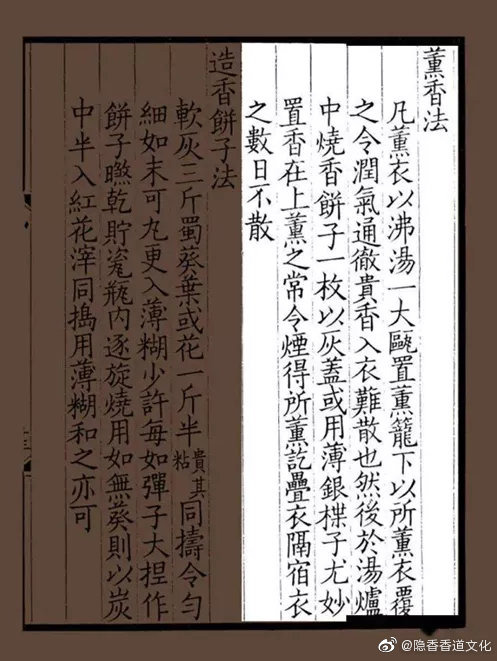
Sometimes clothes could be washed separately.
护领/Hùlǐng (lit. "Collar protector". They are usually white in colour) were often detachable so people only needed to wash that instead of the whole clothes. It could also be made from paper.
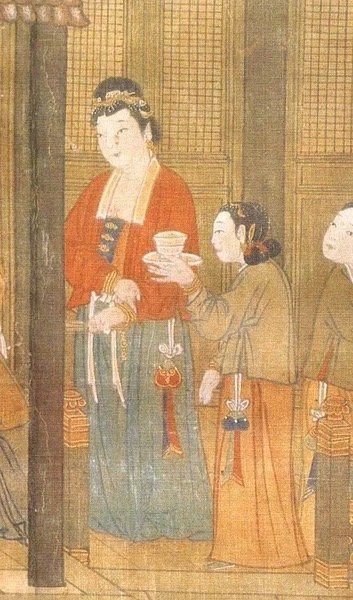
Those type of embroidered/painted collars from Song dynasty were attached separately, so it was possible that they were removed while the body of the clothes were washed separately.
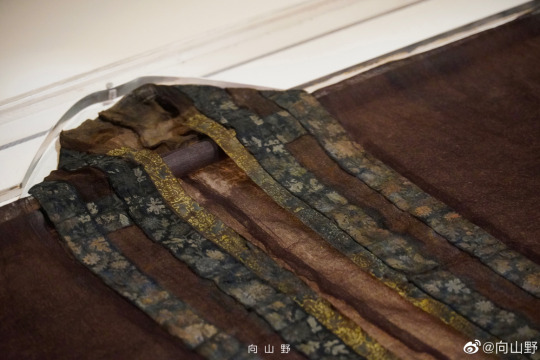
People usually washed clothes in water with the aid of a 捣衣杵/dǎoyī chǔ or 洗衣杵/xǐyī chǔ 搓衣板/cuō yī bǎn wash stick and/or a washboard.

The earliest type of of soap recorded being used was 草木灰/cǎomù huī (wood ash). Other plant based soaps were also used, such as 皂荚/zàojiá (Gleditsia sinensis, black locust), 无患子/wúhuànzi (Sapindus saponaria, soapberries), 茶箍/chágū(the dregs from pressing oil from camellia seeds plus hay) etc.
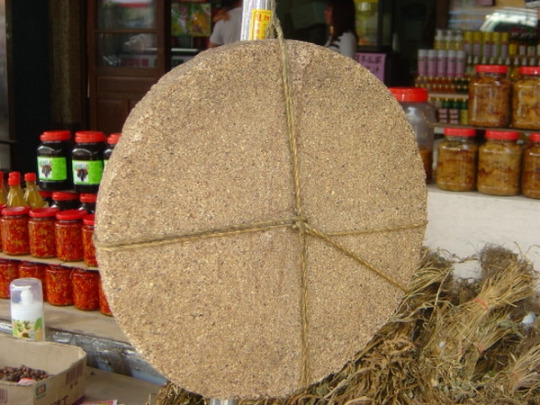
There were also records of potassium soap. Those soaps however were usually in liquid form and often used in fabric manufacture [我国古代的洗涤剂].
猪胰子/Zhū yízi Pig pancreas was also used. 白国斌/Bái Guóbīn (in 2021) wrote how they made pig pancreas soap when he was young - pasted the pig pancreas, then dried and powdered it. Later mix with alkaline water and made into ball to air dry.
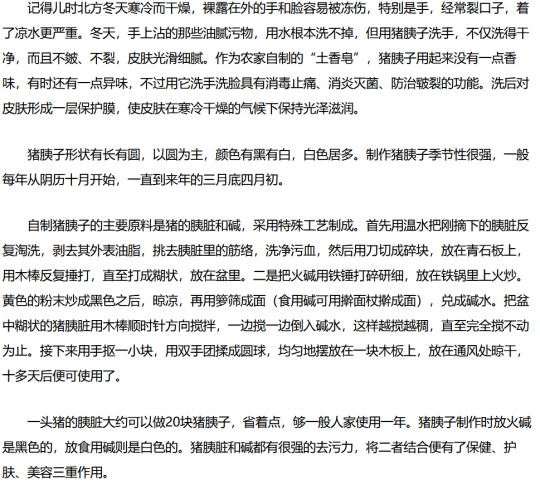
澡豆/Zǎodòu was made from the combination of powdered pig pancreas, bean powder and other herbs. There are many recipes, such as a recipe by 孙思邈/Sūn Sīmiǎo from Tang dynasty includes 16 materials. They were also known as 胰子/Yízi.
Aromatic herbs and other xiang (fragrant things) could also be added into the water in the end to add pleasant fragrance to the clothes, such as a book in Ming dynasty《多能鄙事》/Duō néng bǐ shì ("I can do a lot of humble things") by 刘基/Liú jī recorded: Tree Peony Bark 31.25g and Spikenard 3.125g, powdered.
#chinese history#hanfu#china#historical clothing#laundry#fouryearsofshades#long post#my ask box is finally cleared#i am free
863 notes
·
View notes
Text

♕ 왕팔랑나비 (Lobocla bifasciata) : Skippers Family (Hesperiidae)



This cute caterpillar is crop and fasten leaves with their threads to make their soild and cozy home.
Their host plants are bean family, like Kudzu, Locust trees... (that's why their heads are look like a red bean)
They overwintering as larvae and pupae until next shiny summer is coming, and then...









They become fluffy noble skippers! ❤️
Caterpillar observation by onidiras on iNaturalist (CC BY-NC)
#photographers on tumblr#my photography#original photographers#art#lensblr#photography#insect photography#wildlife photography#macro photography#nature photography#nature#naturecore#insect#butterfly#skipper#hesperiidae#caterpillar#caterpillars#bugblr#bug#bugs#biology#entomology#fluffy angel#knowledge#read bean part was a joke lol#my beloved butterfly#not my photos tag#no to generative ai
20 notes
·
View notes
Text
youtube
Sunday School Wrong Again. The Case for John the Baptist Being a Vegetarian -- An Exploration of Early Christian Writings and Scholarly Texts, Locust Beans (Not Locusts) -- Beans, Not Bugs -- Spiritual Awakening Radio Podcast. Note: I will be doing a follow-up part 2 on this topic at some point, as more early Christian apocrypha have been published as well as I've located more writings from the Aramaic-Syriac tradition affirming the vegetarianism of John's Nasoraean sect.
7 notes
·
View notes
Text
Oh yeah, here's some more of the mechs I've been painting lately!

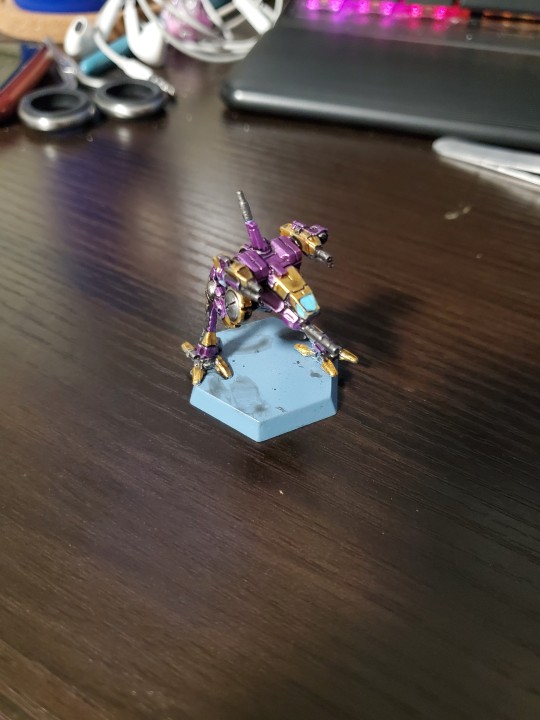
A locust! I finally purchased a quality gold paint after fighting with the bottle I had before (we will not discuss the atrocity of a Pheonix Hawk that shitty gold paint produced). Luckily this new beans spreads perfect and doesn't even need a second layer in most places!


Next up is my second Timberwolf! My roommate and I got to talking about cars while I was sitting down to paint this and I ended up deciding to paint it like my dad's old navy blue Mustang GT, white racing stripes and all!

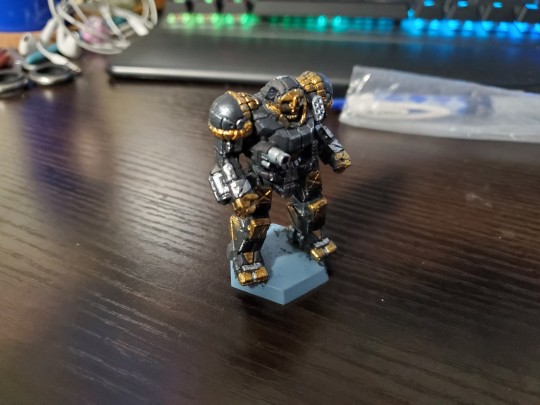

And finally, my atlas. I had the idea of painting it with gold over the skull-like face, and the rest of the colors just fell into place afterwards. I think it came out beautifully. A nice balance of shiny and matte.
33 notes
·
View notes
Text
Chopra Household: Chapter 6, Part 8
The birthday continues! Most of the family have appointments to attend afterwards leaving Savannah and Viola under the care of nana Lavina. I mean it's not like she could be any worse than Alana the (insert your favourite swear word for mean nanny)

BTW it was daylight savings here so that's why my posts may seem an hour shifted for you...
If Viola is attempting to say something it will be in brackets, otherwise you can assume it's just trying out sounds Mercedes has a speech delay and may get words wrong, correct wording will be in brackets if that is the case Savannah aka Honeybee Mercedes aka Little Ladybug Viola aka Green Bean
Mercedes: Hey nana
Lavina: Happy birthday kiddo
Mercedes: I have bad news, papa went to the doctor and they found out he’s sick
Lavina: What? Oh why didn’t he tell me? I can’t lose him
Mercedes: Kidding!
Lavina: That’s not very funny young lady
Bizarre thing happened. Mercedes had rolled a like of deception but after this got a prompt saying she felt mischief was wrong? I like the game to have some say so while I did not add a dislike of mischief I changed her like of deception to silly behaviour to match her sister.

Milton: Oh hey you have cake
Savannah: Of course Milton, it’s a birthday party
Milton: That’s uncle Milton to you
Savannah: Mama do we really have to call him uncle? He’s only 2 years older than us
Cassandra: It’s important to be polite to family honeybee
Lavina: And respectful! You girls could learn more respect
Mercedes: *sighs* It was one joke nana
Cassandra: Lavina I have an appointment and Rahul needs to take Mercedes to one. Could you watch the kids for us please?
Savannah: I can watch the house mama
Lavina: Of course I can dear, take all the time you need
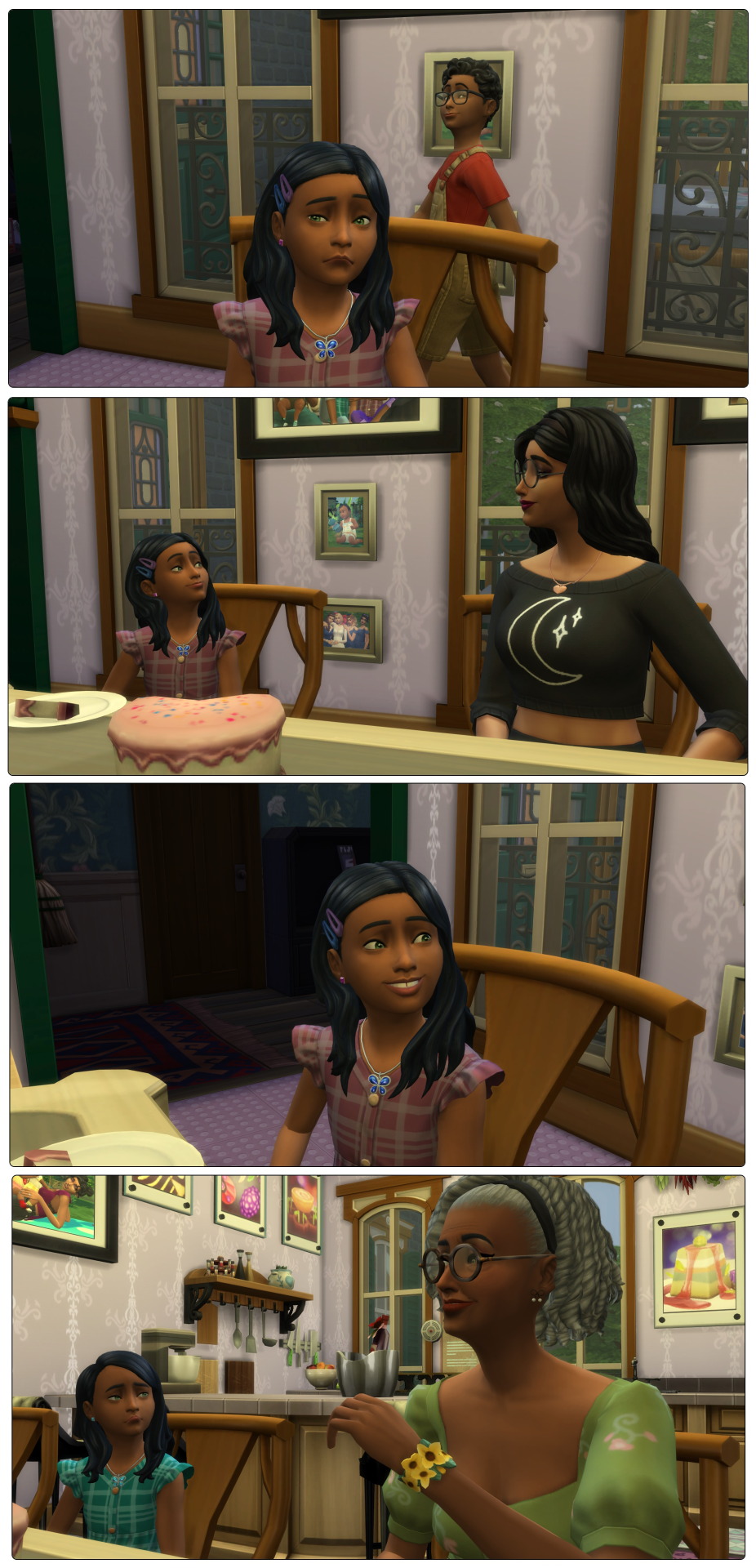
Savannah: But nana I can do it
Lavina: You’re six, you couldn’t take care of a fire. Now I hear your sister crying, go play outside or learn something
Savannah: Oh maybe I can find some cool bugs!
Lavina: Just don’t bring them into the house
Poor Viola has been trying to get to sleep but is still a bit overwhelmed by the party.
Lavina: Now what’s all this? You are making a habit of crying every time you see me Viola
Viola: *cries* ge da noo lu (I'm so tired, clapping took it out of me)
Lavina: Is nana scary huh? Big bad nana. Close your eyes and sleep, big bad nana can defend your crib from the monsters huh
Following some soothing Viola does manage to fall asleep as Lavina watches over her.

Outside Savannah isn’t having much luck. But around by the garden she spots some locusts, perfect, papa will approve of catching them! She grabs at them and manages to get hold of 2. Perhaps she can convince mama and papa to take her and Mercedes to Granite Falls so she can find more! Back inside she decides to tackle some homework.
Milton: Why are you holding your pencil like that
Savannah: Like what
Alexander: Don’t be rude Milton, not everyone does things the same way
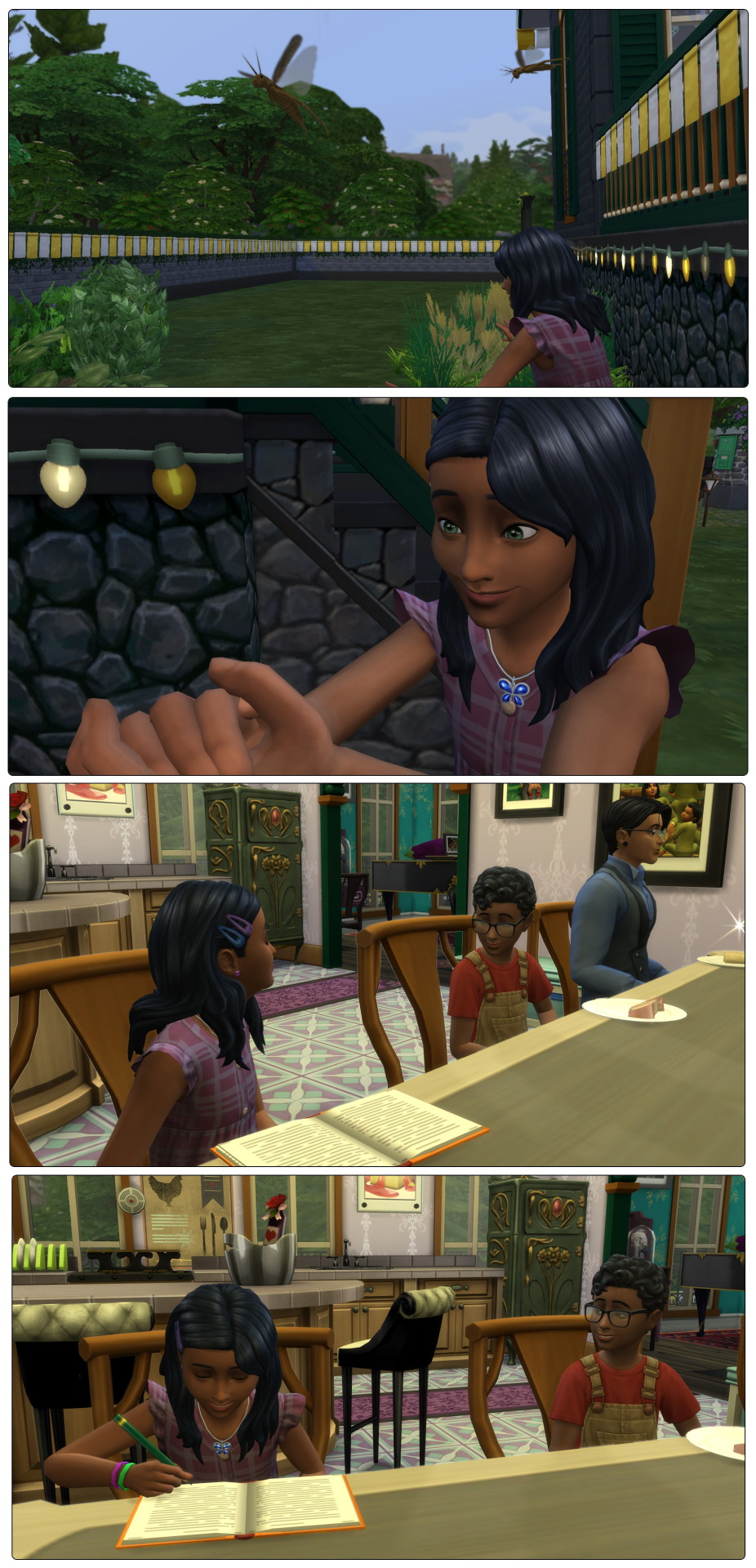
Milton: Did you never use crayons
Savannah: *gruffly* I have a motor delay actually, pencils are hard
Milton: Oh, sorry
Alexander: That’ll teach you not to be rude
Savannah: I think I’ll go see if mama is back
Milton: I am sorry!
...
Cassandra is pumping in the spare room when Savannah finds her.
Savannah: Mama, can I still go to OT now I’m a child
Cassandra: Of course you can honeybee. It might be called something different but any support you need, we’ll find for you
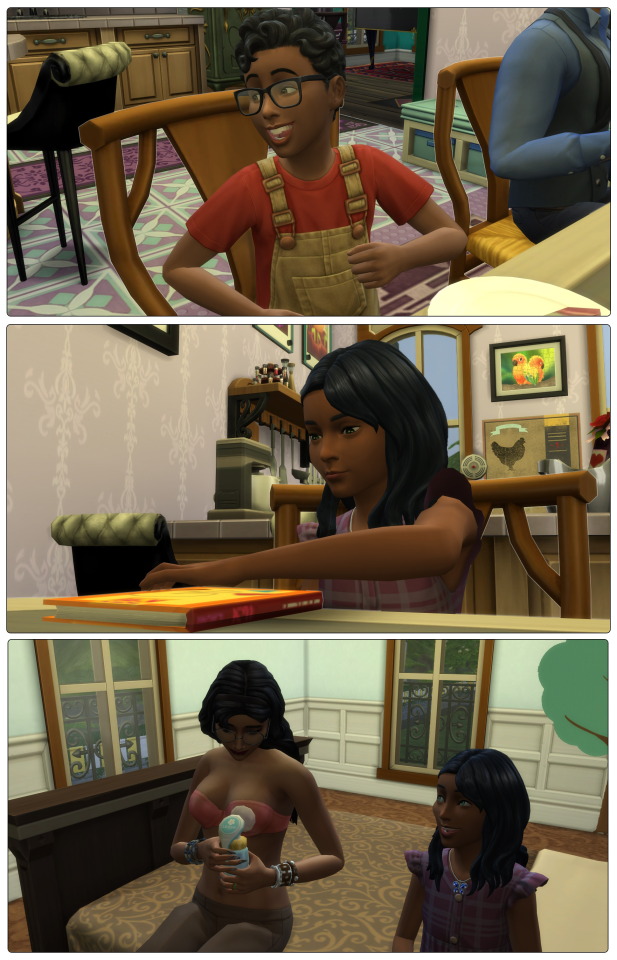
Savannah: Then Uncle Alexander told him off
Mercedes: Nice!
Savannah: So what did the brain doctor say
Mercedes: They want me to do… Papa how did they say it?
Rahul: Your sister is getting referred to another type of doctor to see if she needs extra help at school
Mercedes: Can I not go to school?
Rahul: No! Whatever you need we can sort but you’ll be best having your first day with your sister
Savannah: Yeah. You don’t want to leave me alone do you? We do everything together

Mercedes: Except OT and word class
Cassandra brings Viola to the table and the family begin eating. For some reason everyone is migrating away from Viola?
Mercedes: Mama did your point tent (appointment) go okay
Cassandra: Apparently I have ADHD which I guess is a bit of a surprise but I’ll be fine. Everybody’s brain has to work in its own way
Rahul: Exactly! Now Viola, how about some peanut butter puffs? Nice and yummy
Viola looks at her papa, confused. Why is what he holding bigger than the things on the plate? It can’t just be her eyesight playing up, can it?
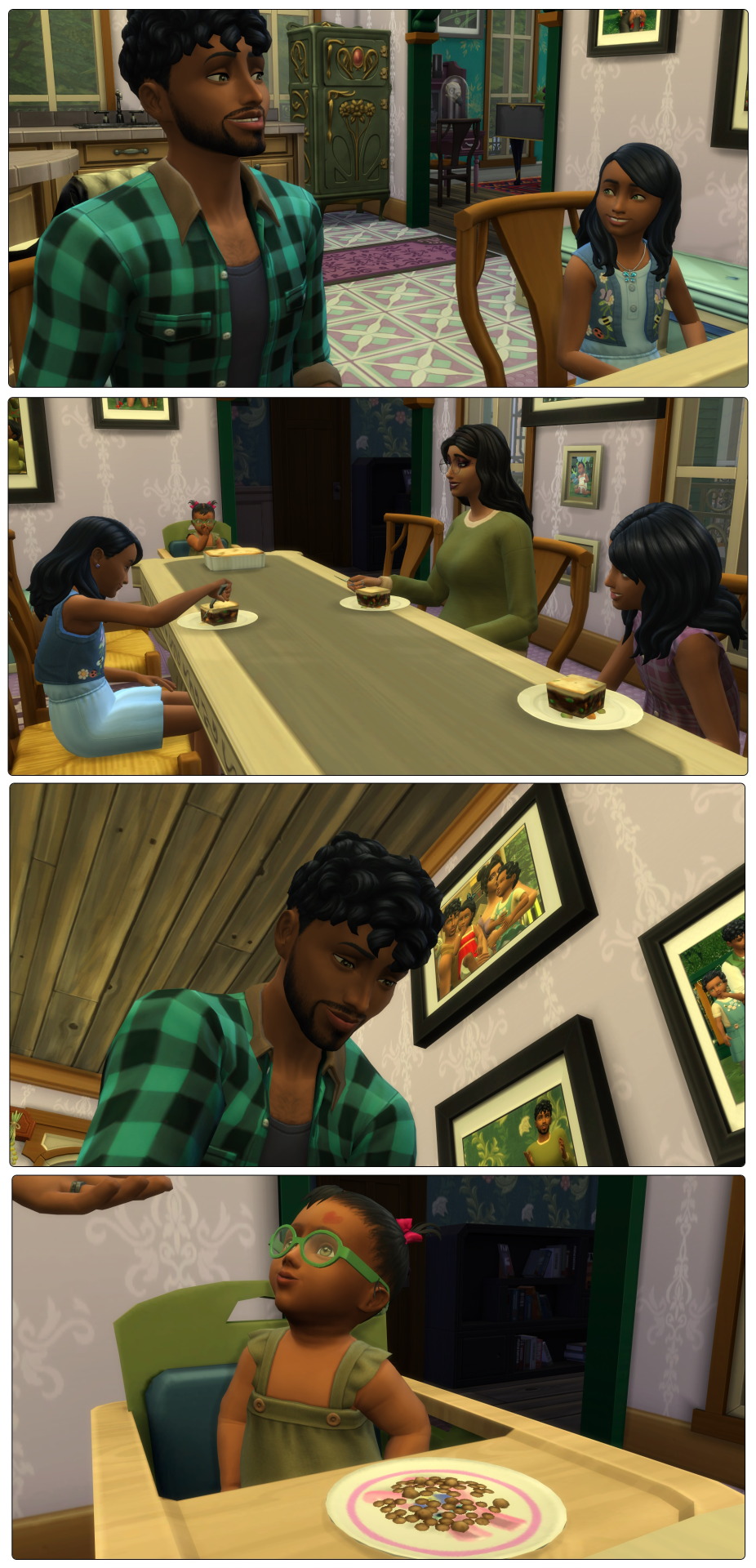
Savannah: Mama, can we have a trip to Granite Falls? I’d love to see some more bugs
Cassandra: Actually papa and I have been talking and we’d like you two to join scouts
Mercedes: Scouts? Why
Rahul: Nature is important to us, we want you both to learn to love it
Cassandra: Plus it will leave after school times free for OT and word class
The girls remain skeptical but agree. Meanwhile Viola is unsure about the taste of peanut butter puffs (and their creepy resemblance to banana once she picks them up) but one thing is for sure, they are fun to play with!
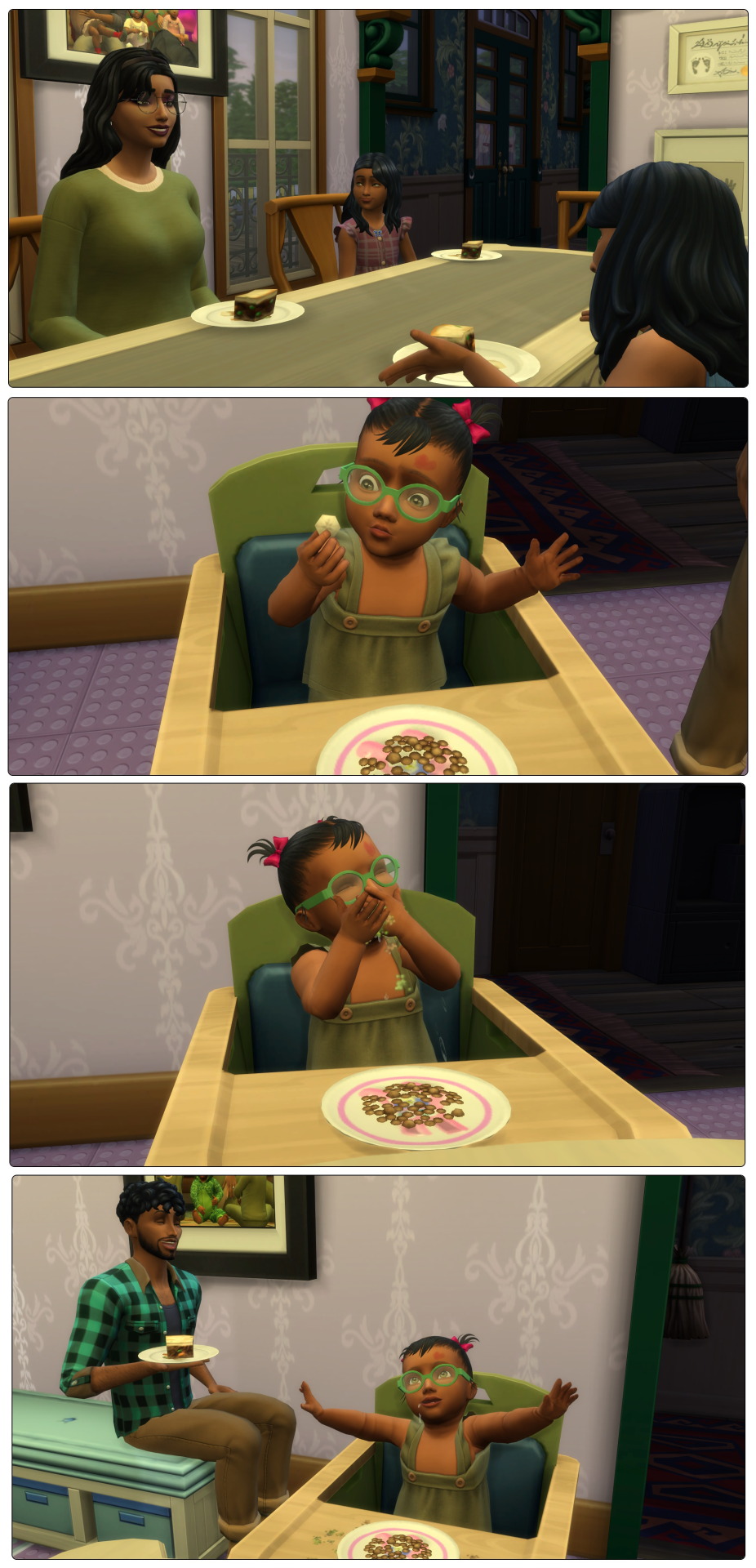
Savannah: Do we have to go to bed mama
Cassandra: It’s getting late honeybee, and don’t you want to check out the new bunk beds
Mercedes: I call dibs on the bottom one! That way you can still tuck me in mama
Cassandra: *smiles* alright but we need to clean up dinner first
Savannah: I got the plates
Cassandra: Mercedes could you put the leftovers away before they spoil please
Mercedes: Yes mama

Rahul: How do you two like the bunks
Savannah: It’s great papa. I can be up high just like butterflies are
Rahul: Good night rugrats, I love you two
Twins: Goodnight papa
Savannah climbs up to the top and snuggles in while Cassandra tucks Mercedes in.
Cassandra: Goodnight Mercedes. I love you both, have good dreams
Twins: Love you mama

Previous ... Next
#sims 4#the sims#the sims 4#simblr#my sims#ChangingPlumbobStorytime#R0902#SavannahChopra#MercedesChopra#RahulChopra#CassandraChopra#ViolaChopra#MiltonGoth#AlexanderGoth
22 notes
·
View notes
Text
The honey locust tree (Gleditsia triacanthos) is, along with the periodic cicada, to me one of the great symbols of American weirdness.
When one contemplates the great temperate, deciduous forests of eastern America, at first glance it is easy to see in them a transatlantic continuation of the forests of old Europe. The "oak and ash and [haw]thorn" of Merrie England's countryside are all present, as are beech and maples and other plants that would have been familiar to the English, Dutch, and French who first settled this land. There are certainly forests in the eastern states where, if you squint, you can almost see a troupe of fairy tale knights and ladies riding on brightly caparisoned horses coming round a corner of the trail.
But, upon closer inspection of these forests, we find...the honey locust. A canopy tree with an eccentric growth habit, whose trunk is armored with what can only be called spikes that are sometimes well over three inches long, that produces in fall weird foot long beans full of a semi-sweet manna, and whose wood burns as hot as a coal fire, the only medieval text it would fit neatly into would be the wild travel tales of John Mandeville. And so, for me, it is a symbol of all that is distinctively American, distinctly of thr New World
There's other trees that have a similar effect - the pawpaw with its lumpy, banana-custard fruits, its Goth dried blood flowers, and its giant leaves that smell of diesel fuel; or the tulip-poplar, which hides flowers as bright as the morning sun on top of a trunk a hundred feet tall; or the bald cypress, a conifer that loses its needles every winter and that lives longer than whole civilizations; but the honey locust, common even on suburban streets and city parks, is one of the most frequently encountered and obviously weird of them, and so it's the one I always gravitate towards as a symbol.
38 notes
·
View notes
Text

Vegan Senegalese Yassa
#vegan#appetizer#lunch#dinner#senegalese cuisine#west african cuisine#african cuisine#veganized#yassa#tempeh#lemon#onion#garlic#scotch bonnet peppers#thyme#locust bean powder#bell peppers#bay leaf#olives#vinegar#parsley#turmeric#mustard#paprika#olive oil#black pepper#sea salt
6 notes
·
View notes